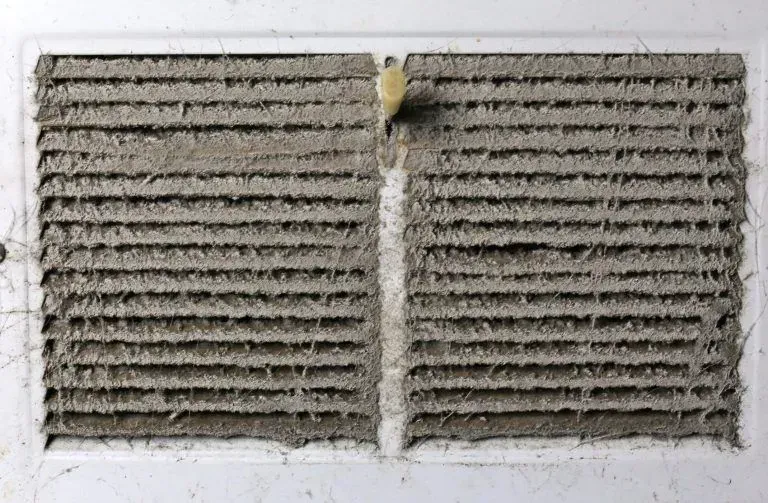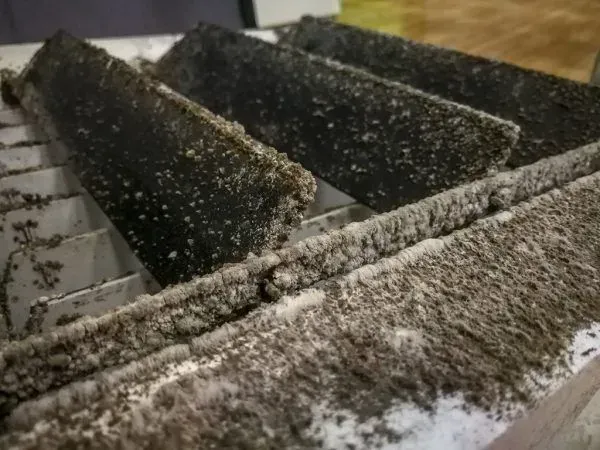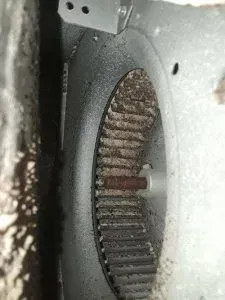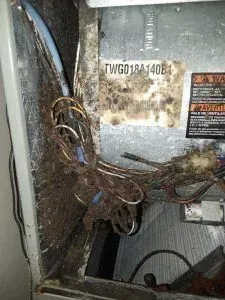
Interior Cleaning Systems of Birmingham, AL - Air Duct Cleaning Specialists
#1 AIR DUCT CLEANING SERVICE Of BIRMINGHAM, AL
Residential & Commercial
Air Duct & Dryer Vent Cleaning Services
Interior Cleaning Systems - Professional Services
Superior Air Quality Duct Cleaning
HVAC Duct Work Cleaning
Air Duct Cleaning Service
Request A Free Quote
Residential & Commercial Services
Air Duct & Dryer Vent Cleaning Services
Bacteria, mold, dust, dust mites, and mite feces are among the contaminants that can build up in neglected air ducts. Worried about the air quality in your home? Poor indoor air quality, which may lead to allergic reactions, can result from the circulation of unclean air through inadequately inspected and cleaned air ducts. It’s essential to note that the methods for air duct cleaning can vary, despite the industry organizations establishing standards for the process.
Interior Cleaning Systems - Professional Services
With expertise and state-of-the-art equipment, Interior Cleaning Systems ensures the proper execution of your project. Opting for Interior Cleaning Systems to clean your ductwork system not only enhances the indoor air quality in your home but also boosts the efficiency of your heating system. Our team, equipped with the necessary experience and tools, is ready to serve your home or business.
Superior Air Quality Duct Cleaning
The often neglected aspect of indoor environments is the air quality that permeates our homes and buildings. When the need for cleaning arises, entrust your air duct cleaning concerns to NADCA-trained professionals. Regular air duct cleaning is essential to uphold a clean and pest-free living space, preventing issues like mildew, bugs, and vermin. Our comprehensive duct maintenance services are designed to ensure the cleanliness of your air ducts. A reliable HVAC system incorporates well-maintained ducts. Reach out to our Birmingham office promptly for assistance!
HVAC Duct Work Cleaning
In numerous residences and commercial establishments, air ducts play a crucial role. Situated in ceilings, walls, and floors, these ducts facilitate the circulation of air throughout the structure via heating and air conditioning systems. Over time, these ducts can accumulate dirt, pollen, dust mites, and other undesirable substances, posing health risks by compromising the air quality. This is especially problematic for individuals with allergies, asthma, and respiratory issues, but it affects everyone. Interior Cleaning Systems trained professionals specialize in addressing a wide range of air duct and dryer vent systems, effectively eliminating hazardous impurities. Ensuring the proper cleaning of ducts and vents is essential for enhancing indoor air quality. The growing awareness of indoor air pollution emphasizes the importance of addressing this concern.
If your air ducts or dryer vent haven’t undergone cleaning in the past five years, it’s high time for a thorough cleaning. Schedule one now to prevent potential issues and ensure a healthier indoor environment in the future.
Residential and Commercial Air Duct Cleaning Service
Interior Cleaning Systems of Birmingham, AL will provide you with a free duct cleaning estimate at your convenience. Furthermore, we only use high quality equipment and tools to clean your air duct and heating furnace units in your home.


HVAC
REASONS TO HAVE AIR DUCT CLEANING IN BIRMINGHAM, AL DONE BY LICENSED PROFESSIONALS
INDOOR POLLUTANTS Excessive moisture, volatile organic compounds (VOCs), combustion products, radon, pesticides, dust particles, viruses, and bacteria are all common contaminants inside the home. Cleaning air ducts helps maintain A healthy indoor air quality in your home. Breathe in fresh air.
PET DANDER Pet dander is made up of small particles of skin shed by cats, dogs, rodents, birds, and other furry or feathered creatures. These scraps of skin might elicit allergic responses in persons who are sensitive to these substances. Cleaning air ducts inside the home can remove particulates such as mold and dust, which are known triggers.
FIRE HAZARD Something that might cause a fire or smoke is a fire safety hazard, especially in your home. A dryer vent full of dust and debris, for example, can create a flammable vent leading to a fire. Reduce the risk of harm to your family and damage to your home. Clearing out the lint in your dryer is important.
ENERGY SAVINGS Leaky ducts can impair the effectiveness of your heating and cooling system by up to 20%. Duct sealing and insulation improves efficiency, decreases energy costs, and may frequently pay for itself in energy savings. A duct cleaning service allows the system to not have to work as hard which makes it use less power, lowering your monthly energy bills for your home.
Indoor Air Quality
HVAC AIR CONDITIONING SERVICES
Services Provided
01.
Duct Cleaning and Repair
HVAC technicians can clean, repair, and seal your air ducts.
Do you have any old air ducts that might be leaking? You may not realize that uninsulated or leaky air conditioning ducts can significantly increase your energy cost.
Dirty ductwork in your home can worsen allergies and asthma and create poor indoor air quality. Enhance your home’s indoor air quality with an air duct cleaning. In addition to normal accumulations of dust and dirt found in all homes with air ducts, there are several other factors that can increase the need for regular HVAC system cleaning. Come home to clean.
02.
HVAC Fan Motor Replacement
The main cause for blower motors failing is dirty air passing over and then getting clogged, causing the motor to overheat.
Wear and strain will ultimately take its toll on the fan motor, which is one of the hardest performing components in your air conditioner.
Dirty ductwork in your home can worsen allergies and asthma and create poor indoor air quality. Enhance your home’s indoor air quality with an air duct cleaning. In addition to normal accumulations of dust and dirt found in all homes with air ducts, there are several other factors that can increase the need for regular HVAC system cleaning. Come home to clean.
A replacement blower motor is a great investment. Make sure to find the right contractor to take a few things into consideration, including the type of drive, the diameter of the motor, rotation direction, horsepower, voltage, speeds, and size of the capacitor.
03.
HVAC Repair
Troubleshooting your cooling system, while our technicians offer the proper diagnosis. Condenser, evaporator coils, ductwork and air handler repairs are needed.
How to decide whether or not you should repair or replace your unit. First, you need to look at your HVAC system to determine the best way to handle it.
Age of AC unit
Refrigerant
Energy Efficiency
Keep this all in mind when being consulted with a HVAC technician.
04.
Air System Installation
Complete Install of HVAC system or an alternative such as, a mini split air conditioner. If the home isn’t equipped with air conditioning ducts, this is a great option.
An HVAC unit offers both the heating and air conditioning in your home. Ventilation is needed to circulate so moisture can escape. The whole HVAC unit includes the furnace, AC, and the moisture-releasing ductwork and vents. Pure strength in cleaning.
05.
A/C Maintenance
Technicians will preform a routine inspection , tune up and return system to factory conditions.
When making scheduled regular tune-ups for your air conditioning system, you avoid unexpected breakdowns. It is also inexpensive and your return on investment is huge. It improves the overall efficiency and lifespan of your AC. Whether you choose to have your home’s air ducts cleaned or not, sticking to a thorough preventative maintenance program is critical to reducing duct pollution. Clean Air from the inside out.
Check out our work
Taking cleaning to another level.



View full gallery
See Our Reviews On




Find Us on These local business directories
Birmingham, AL
AIR DUCT CLEANING SERVICE
Our specialization is Air Duct Cleaning Service. It is the cleaning of air ducts by removing impurities such as dust, mold, and germs from your ductwork and indoor air. Duct cleaning also helps to prevent excessive home dust and dust allergies by removing allergens from your home’s walls.
Professional duct cleaning services employ specialized blowers and vacuums to clean up your home’s supply, intake, and return ducts. Your HVAC system circulates the air in your home, transporting dust, debris, and even mold. Particulate matter buildup in your air ducts might have a negative influence on your health.
SERVICES
Air Duct Cleaning
Duct Cleaning & Repair
Dryer Vent Cleaning
AC System Installation
AC Maintenance
Alabama License #20031
3935 Veterans Memorial Drive, Adamsville, AL 35005
Copyright © 2024 Interior Cleaning Systems LLC, All Rights Reserved.
